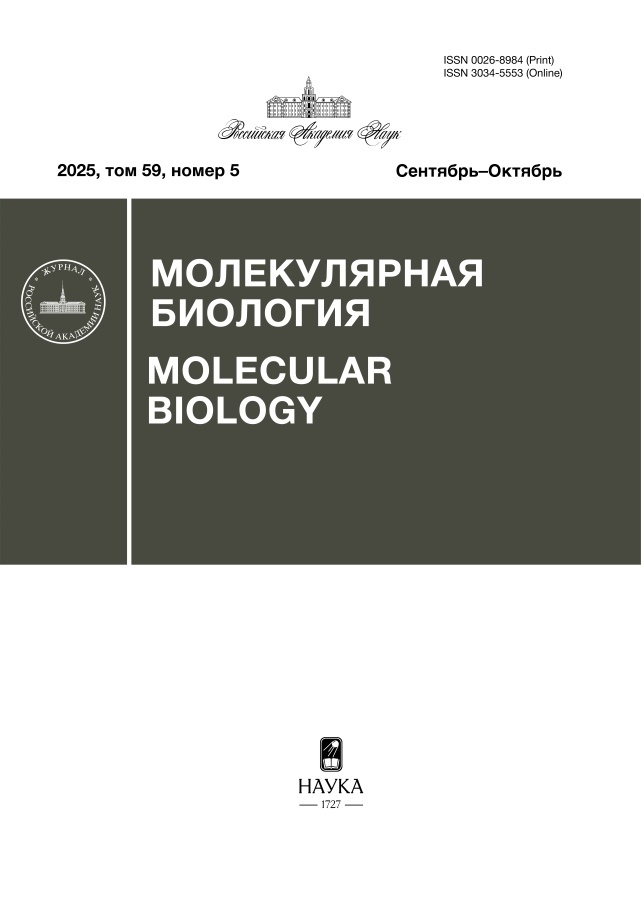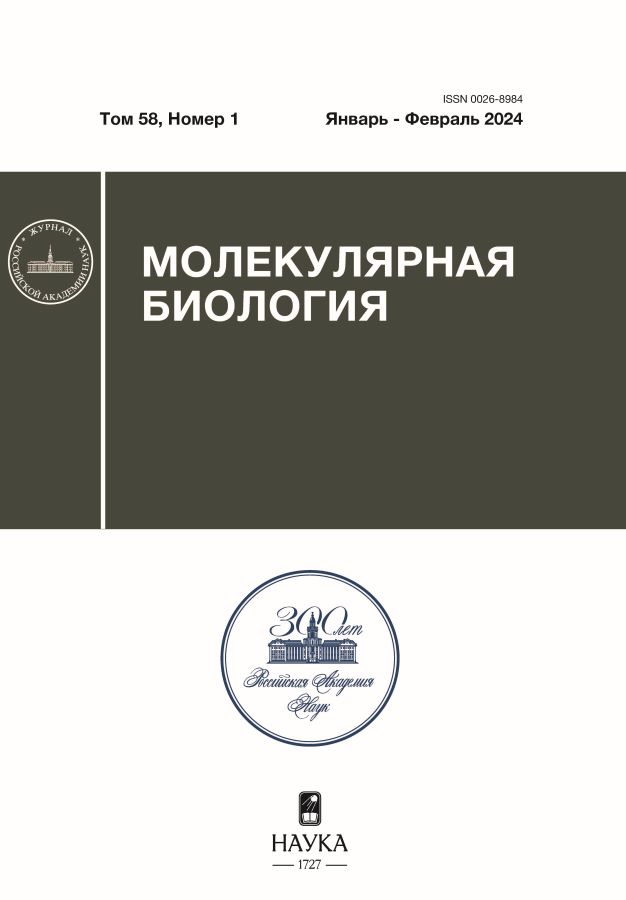Long noncoding RNAs MEG3, TUG1, and hsa-miR-21-3p are potential diagnostic biomarkers for coronary artery disease
- Authors: Abdelgawad M.1, Abdallah H.Y.2, Fareed A.2, Ahmed A.E.1
-
Affiliations:
- Beni-Suef University
- Suez Canal University
- Issue: Vol 58, No 1 (2024)
- Pages: 40-42
- Section: ГЕНОМИКА. ТРАНСКРИПТОМИКА
- URL: https://rjeid.com/0026-8984/article/view/655339
- DOI: https://doi.org/10.31857/S0026898424010035
- EDN: https://elibrary.ru/OHPZAR
- ID: 655339
Cite item
Abstract
Peripheral blood biomarkers are of particular importance to diagnose certain diseases including coronary artery disease (CAD) due to their non-invasiveness. Investigating the expression of noncoding RNAs (ncRNAs) paves the way to early disease diagnosis, prognosis, and treatment. Consequently, in this research, we aimed to investigate a panel of ncRNAs as potential biomarkers in patients with coronary artery disease. Two different groups have been designed (control and CAD). All participants were subjected to interviews and clinical examinations. Peripheral blood samples were collected, and plasma was extracted. At the same time, target ncRNAs have been selected based on literature review and bioinformatic analysis, and later they underwent investigation using quantitative real-time PCR. The selected panel encompassed the long non-coding RNAs (lncRNAs) MEG3, TUG1, and SRA1, and one related microRNA (miRNA): hsa-miR-21-3p. We observed statistically significant upregulation in MEG3, TUG1, and hsa-miR21-3p in CAD patients compared to control participants (p-value < 0.01). Nevertheless, SRA1 exhibited downregulation with no statistical significance (p-value > 0.05). All ncRNAs under study displayed a significantly strong correlation with disease incidence, age, and smoking. Network construction revealed a strong relationship between MEG3 and TUG1. ROC analysis indicated high potentiality for hsa-miR-21-3p to be a promising biomarker for CAD. Moreover, MEG3 and TUG1 displayed distinguished diagnostic discrimination but less than hsa-miR-21-3p, all of them exhibited strong statistical significance differences between CAD and control groups. Conclusively, this research pinpointed that MEG3, TUG1, and hsa-miR-21-3p are potential biomarkers of CAD incidence and diagnosis.
Keywords
About the authors
M. Abdelgawad
Beni-Suef University
Email: hoda_ibrahim1@med.suez.edu.eg
Biotechnology and Life Sciences Department, Faculty of Postgraduate Studies for Advanced Sciences (PSAS)
Egypt, Beni-Suef, 62511H. Y. Abdallah
Suez Canal University
Email: hoda_ibrahim1@med.suez.edu.eg
Genetics Unit, Department of Histology and Cell Biology, Faculty of Medicine, Center of Excellence in Molecular and Cellular Medicine, Faculty of Medicine
Egypt, Ismailia, 41522A. Fareed
Suez Canal University
Email: hoda_ibrahim1@med.suez.edu.eg
Department of Cardiology, Faculty of Medicine
Egypt, Ismailia, 41522A. E. Ahmed
Beni-Suef University
Author for correspondence.
Email: hoda_ibrahim1@med.suez.edu.eg
Biotechnology and Life Sciences Department, Faculty of Postgraduate Studies for Advanced Sciences (PSAS)
Egypt, Beni-Suef, 62511References
- Malakar A.K., Choudhury D., Halder B., Paul P., Uddin A., Chakraborty S. (2019) A review on coronary artery disease, its risk factors, and therapeutics. J. Cell Physiol. 234(10), 16812–16823. doi: 10.1002/jcp.28350.
- Wan Q., Qian S., Huang Y., Zhang Y., Peng Z., Li Q., Shu B., Zhu L., Wang M. (2020) Drug discovery for coronary artery disease. Adv. Exp. Med. Biol. 1177, 297–339.
- Hunt S.A., Abraham W.T., Chin M.H., Feldman A.M., Francis G.S., Ganiats T.G., Jessup M., Konstam M.A., Mancini D.M., Michl K., Oates J.A., Rahko P.S., Silver M.A., Stevenson L.W., Yancy C.W. (2009) 2009 Focused update incorporated into the ACC/AHA 2005 guidelines for the diagnosis and management of heart failure in adults: a report of the American college of cardiology foundation/American heart association task force on practice guidelines developed in collaboration with the International society for heart and lung transplantation. J. Am. Coll. Cardiol. 53(15), e1–e90. doi: 10.1016/j.jacc.2008.11.013
- Netto J., Teren A., Burkhardt R., Willenberg A., Beutner F., Henger S., Schuler G., Thiele H., Isermann B., Thiery J., Scholz M., Kaiser T. (2022) Biomarkers for non-invasive stratification of coronary artery disease and prognostic impact on long-term survival in patients with stable coronary heart disease. Nutrients. 14(16), 3433. doi: 10.3390/nu14163433
- Parsanathan R., Jain S.K. (2020) Novel invasive and noninvasive cardiac-specific biomarkers in obesity and cardiovascular diseases. Metab. Syndr. Relat. Disord. 18(1), 10–30. doi: 10.1089/met.20190073
- Cardona-Monzonís A., García-Giménez J.L., Mena-Mollá S., Pareja-Galeano H., de la Guía-Galipienso F., Lippi G., Pallardó F.V., Sanchis-Gomar F. (2020) Non-coding RNAs and Coronary Artery Disease. In: Advances in Experimental Medicine and Biology. Ed. Xiao J. Singapore: Springer Singapore, V. 1229, pp. 273–285. doi: 10.1007/978-981-15-1671-9_16
- Poller W., Dimmeler S., Heymans S., Zeller T., Haas J., Karakas M., Leistner D.M., Jakob P., Nakagawa S., Blankenberg S., Engelhardt S., Thum T., Weber C., Meder B., Hajjar R., Landmesser U. (2018) Non-coding RNAs in cardiovascular diseases: diagnostic and therapeutic perspectives. Eur. Heart J. 39(29), 2704–2716. doi: 10.1093/eurheartj/ehx165
- Adams V. (2019) Assessment of micro ribonucleic acids after exercise: Is this the future to detect coronary artery disease at its early stage? Eur. J. Prev. Cardiol. 26(4), 346–347. doi: 10.1177/2047487318811958
- Zou L., Ma X., Lin S., Wu B., Chen Y., Peng C. (2019) Long noncoding RNA-MEG3 contributes to myocardial ischemia-reperfusion injury through suppression of MIR-7-5p expression. Biosci. Rep. 39(8), BSR20190210. doi: 10.1042/BSR20190210
- Piccoli M.T., Gupta S.K., Viereck J., Foinquinos A., Samolovac S., Kramer F.L., Garg A., Remke J., Zimmer K., Batkai S., Thum T. (2017) Inhibition of the cardiac fibroblast-enriched lncRNA Meg3 prevents cardiac fibrosis and diastolic dysfunction. Circ. Res. 121(5), 575–583. doi: 10.1161/CIRCRESAHA.117.310624
- Zhang J., Liang Y., Huang X., Guo X., Liu Y., Zhong J., Yuan J. (2019) STAT3-induced upregulation of lncRNA MEG3 regulates the growth of cardiac hypertrophy through miR-361-5p/HDAC9 axis. Sci. Rep. 9(1), 460. doi: 10.1038/s41598-018-36369-1
- Wu Z., He Y., Li D., Fang X., Shang T., Zhang H., Zheng X. (2017) Long noncoding RNA MEG3 suppressed endothelial cell proliferation and migration through regulating miR-21. Am. J. Transl. Res. 9(7), 3326–3335.
- Li F.P., Lin D.Q., Gao L.Y. (2018) LncRNA TUG1 promotes proliferation of vascular smooth muscle cell and atherosclerosis through regulating miRNA-21/PTEN axis. Eur. Rev. Med. Pharmacol. Sci. 22(21), 7439–7447. doi: 10.26355/eurrev-201811-16284
- Guo Y., Sun Z., Chen M., Lun J. (2021) LncRNA TUG1 regulates proliferation of cardiac fibroblast via the miR-29b-3p/TGF-β1 axis. Front. Cardiovasc. Med. 8, 646806. doi: 10.3389/fcvm.2021646806
- Zhang G., Ni X. (2021) Knockdown of TUG1 rescues cardiomyocyte hypertrophy through targeting the miR-497/ MEF2C axis. Open Life Sci. 16(1), 242–251. doi: 10.1515/biol-2021-0025
- Foulds C.E., Tsimelzon A., Long W., Le A., Tsai S.Y., Tsai M.J., O’Malley B.W. (2010) Research resource: expression profiling reveals unexpected targets and functions of the human steroid receptor RNA activator (SRA) gene. Mol. Endocrinol. 24(5), 1090–1105. doi: 10.1210/me.2009-0427.
- Ren S., Zhang Y., Li B., Bu K., Wu L., Lu Y., Lu Y., Qiu Y. (2019) Downregulation of lncRNA-SRA participates in the development of cardiovascular disease in type II diabetic patients. Exp. Ther. Med. 17(5), 3367–3372. doi: 10.3892/etm.20197362
- Yang S., Sun J. (2018) LncRNA SRA deregulation contributes to the development of atherosclerosis by causing dysfunction of endothelial cells through repressing the expression of adipose triglyceride lipase. Mol. Med. Rep. 18(6), 5207–5214. doi: 10.3892/mmr.20189497
- Huang Z., Shi J., Gao Y., Cui C., Zhang S., Li J., Zhou Y., Cui Q. (2019) HMDD v3.0: A database for experimentally supported human microRNA-disease associations. Nucleic Acids Res. 47(D1), D1013–D1017. doi: 10.1093/nar/gky1010
- Huang H.Y., Lin Y.C., Li J., Huang K.Y., Shrestha S., Hong H.C., Tang Y., Chen Y.G., Jin C.N., Yu Y., Xu J.T., Li Y.M., Cai X.X., Zhou Z.Y., Chen X.H., Pei Y.Y., Hu L., Su J.J., Cui S.D., Wang F., Xie Y.Y., Ding S.Y., Luo M.F., Chou C.H., Chang N.W., Chen K.W., Cheng Y.H., Wan X.H., Hsu W.L., Lee T.Y., Wei F.X., Huang H.D. (2020) MiRTarBase 2020: Updates to the experimentally validated microRNA-target interaction database. Nucleic Acids Res. 48(D1), D148–D154. doi: 10.1093/nar/gkz896
- Chang L., Zhou G., Soufan O., Xia J. (2020) miRNet 2.0: Network-based visual analytics for miRNA functional analysis and systems biology. Nucleic Acids Res. 48(W1), W244–W251. doi: 10.1093/nar/gkaa467
- Metsalu T., Vilo J. (2015) ClustVis: A web tool for visualizing clustering of multivariate data using Principal Component Analysis and heatmap. Nucleic Acids Res. 43(W1), W566–W570. doi: 10.1093/nar/gkv468
- Shannon P., Markiel A., Ozier O., Baliga N.S., Wang J.T., Ramage D., Amin N., Schwikowski B., Ideker T. (2003) Cytoscape: a software environment for integrated models. Genome Res. 13(11), 2498‒2504. doi: 10.1101/gr.1239303
- Livak K.J., Schmittgen T.D. (2001) Analysis of relative gene expression data using real-time quantitative PCR and the 2−ΔΔCT method. Methods. 25(4), 402–408. doi: https://doi.org/10.1006/meth.2001.1262
- Saygili H., Bozgeyik I., Yumrutas O., Akturk E., Bagis H. (2021) Differential expression of long noncoding RNAs in patients with coronary artery disease. Mol. Syndromol. 12(6), 372–378. doi: 10.1159/000517077
- Bai Y., Zhang Q., Su Y., Pu Z., Li K. (2019) Modulation of the proliferation/apoptosis balance of vascular smooth muscle cells in atherosclerosis by lncRNA-MEG3 via regulation of miR-26a/smad1 axis. Int. Heart J. 60(2), 444–450. doi: 10.1536/IHJ.18-195
- Wu H., Zhao Z.A., Liu J., Hao K., Yu Y., Han X., Li J., Wang Y., Lei W., Dong N., Shen Z., Hu S. (2018) Long noncoding RNA Meg3 regulates cardiomyocyte apoptosis in myocardial infarction. Gene Ther. 25(8), 511–523. doi: 10.1038/s41434-018-0045-4
- Su Q., Liu Y., Lv X.W., Dai R.X., Yang X.H., Kong B.H. (2020) LncRNA TUG1 mediates ischemic myocardial injury by targeting miR-132-3p/HDAC3 axis. Am. J. Physiol. Heart Circ. Physiol. 318(2), H332–H344. doi: 10.1152/ajpheart.00444.2019
- Yan H.Y., Bu S.Z., Zhou W.B., Mai Y.F. (2018) TUG1 promotes diabetic atherosclerosis by regulating proliferation of endothelial cells via Wnt pathway. Eur. Rev. Med. Pharmacol. Sci. 22(20), 6922–6929.
- Kumar D., Narang R., Sreenivas V., Rastogi V., Bhatia J., Saluja D., Srivastava K. (2020) Circulatory miR-133b and miR-21 as novel biomarkers in early prediction and diagnosis of coronary artery disease. Genes (Basel). 11(2), 164. doi: 10.3390/genes11020164
- Ren J., Zhang J., Xu N., Han G., Geng Q., Song J., Li S., Zhao J., Chen H. (2013) Signature of circulating MicroRNAs As potential biomarkers in vulnerable coronary artery disease. PLoS One. 8(12), e80738. doi: 10.1371/journal.pone.0080738
- Fleissner F., Jazbutyte V., Fiedler J., Gupta S.K., Yin X., Xu Q., Galuppo P., Kneitz S., Mayr M., Ertl G., Bauersachs J., Thum T. (2010) Short communication: asymmetric dimethylarginine impairs angiogenic progenitor cell function in patients with coronary artery disease through a microRNA-21-dependent mechanism. Circ. Res. 107(1), 138–143. doi: 10.1161/CIRCRESAHA.110.216770
- Weber M., Baker M.B., Moore J.P., Searles C.D. (2010) MiR-21 is induced in endothelial cells by shear stress and modulates apoptosis and eNOS activity. Biochem. Biophys. Res. Commun, 393(4), 643–648. doi: 10.1016/j.bbrc.201002.045
- Abdallah H.Y., Hassan R., Fareed A., Abdelgawad M., Mostafa S.A., Mohammed E.A.-M. (2022) Identification of a circulating microRNAs biomarker panel for non-invasive diagnosis of coronary artery disease: case–control study. BMC Cardiovasc. Disord. 22(1), 286. doi: 10.1186/s12872-022-02711-9
- Mohammed A., Shaker O.G., Khalil M.A.F., Gomaa M., Fathy S.A., Abu-El-Azayem A.K., Samy A., Aboelnor M.I., Gomaa M.S., Zaki O.M., Erfan R. (2022) Long non-coding RNA NBAT1, TUG1, miRNA-335, and miRNA-21 as potential biomarkers for acute ischemic stroke and their possible correlation to thyroid hormones. Front Mol. Biosci. 9, 914506. doi: 10.3389/fmolb.2022914506
Supplementary files

Note
#Полный текст статьи на английском языке размещен на сайте издательства Springer – https://link.springer.com/journal/11008










